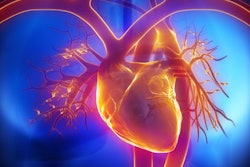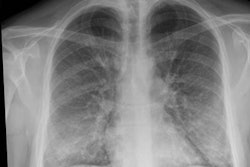Sunday, December 1 | 11:05 a.m.-11:15 a.m. | SSA03-03 | Room S105AB
Individuals with a small 3D whole-heart volume, as calculated on CT scans, have an increased risk of major adverse cardiac events, compared with those with a normal or large heart volume, according to researchers from Harvard Medical School.The group explored the predictive value of 3D whole-heart volume as a means of improving care for patients with nonobstructive coronary artery disease (CAD).
"Patients with nonobstructive coronary artery disease are at increased cardiovascular risk and require an intensified risk stratification," Dr. Borek Foldyna told AuntMinnie.com. "Computed tomography-derived 3D whole-heart volume, defined as pericardial sac volume excluding epicardial fat, may represent a novel imaging marker useful for further risk stratification."
To test this idea, the researchers calculated 3D whole-heart volume from the cardiac CT data of approximately 1,100 patients who participated in the Prospective Multicenter Imaging Study for Evaluation of Chest Pain (PROMISE) trial.
Their analysis revealed a statistically significant association between having a small 3D whole-heart volume on CT and major adverse cardiac events within roughly 26 months after initial examination. The association persisted after adjusting the analysis for cardiovascular risk and coronary artery calcium scores.
Furthermore, they discovered that smaller 3D whole-heart volume moderately correlated with various factors linked to early heart failure with preserved ejection fraction, including low left ventricular stroke volume, higher ratio for left ventricular mass to end-diastolic volume, and increased inflammation.
Thus, small 3D whole-heart volume on CT may represent an early marker for heart failure with preserved ejection fraction, which prior research has shown to be associated with nonobstructive CAD, the researchers noted.




















